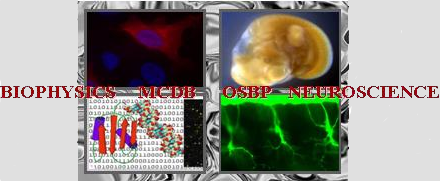Poster abstracts
Poster number 91 submitted by Zachary Weisenseel
Temporal dynamics of lipopolysaccharide-induced inflammation in a socially monogamous rodent
Zachary H. Weisenseel (Neuroscience Graduate Program), Huazhen Chen (Department of Neuroscience, Ohio State Wexner Medical Center), Anastasia Cocieru (College of Arts and Sciences, The Ohio State University), Erica R. Glasper (Department of Neuroscience, Ohio State Wexner Medical Center; Institute for Behavioral Medicine Research, Ohio State Wexner Medical Center)
Abstract:
Background: Lipopolysaccharide (LPS), a membrane component of gram-negative bacteria, strongly activates the innate immune system of many common laboratory species. However, its utility has not been examined in the California mouse (Peromyscus californicus), a genetically monogamous rodent that forms neuroprotective mate bonds. Given that immune activation alters social behavior, characterizing the inflammatory response in this highly social species is an important next step. Methods: We conducted two experiments to track physiological and immune changes after LPS stimulation. In experiment 1, we intraperitoneally (IP) administered vehicle or LPS (1mg/kg) to adult male and female California mice. Tissues were then collected at 1, 3, 24, or 72 hours (h) to assess body and organ weight changes. Next, an enzyme-linked immunosorbent assay was performed to examine plasma concentration of corticosterone (CORT). Finally, RT-qPCR was conducted to assess hippocampal expression of inflammation-related cytokines, chemokines, and adhesion molecules. In experiment 2, mice received IP vehicle or LPS as above. Tissues were then collected at 4h or 24h to examine inflammatory measures during the peak of the immunological response. Next, RT-qPCR was conducted to examine peripheral inflammation in the spleen. Finally, immunohistochemistry was used to determine microglia density and morphology in the dentate gyrus (DG) of the hippocampus. Results: LPS significantly reduces body weight (24h, 72h) and enlarges both spleen and adrenals. LPS increases plasma CORT at 1h and 3h, returning to control levels by 72h. LPS induces peripheral and central cytokine expression at 3-4h, resolving by 24h, generally with stronger effects in males. LPS does not affect microglia density but does induce a shift towards an amoeboid morphology. Conclusion: LPS promotes a robust immune response in this species. These findings will help us explore how immune state affects social behavior in monogamous species.
Keywords: Immune response, lipopolysaccharide, monogamy
